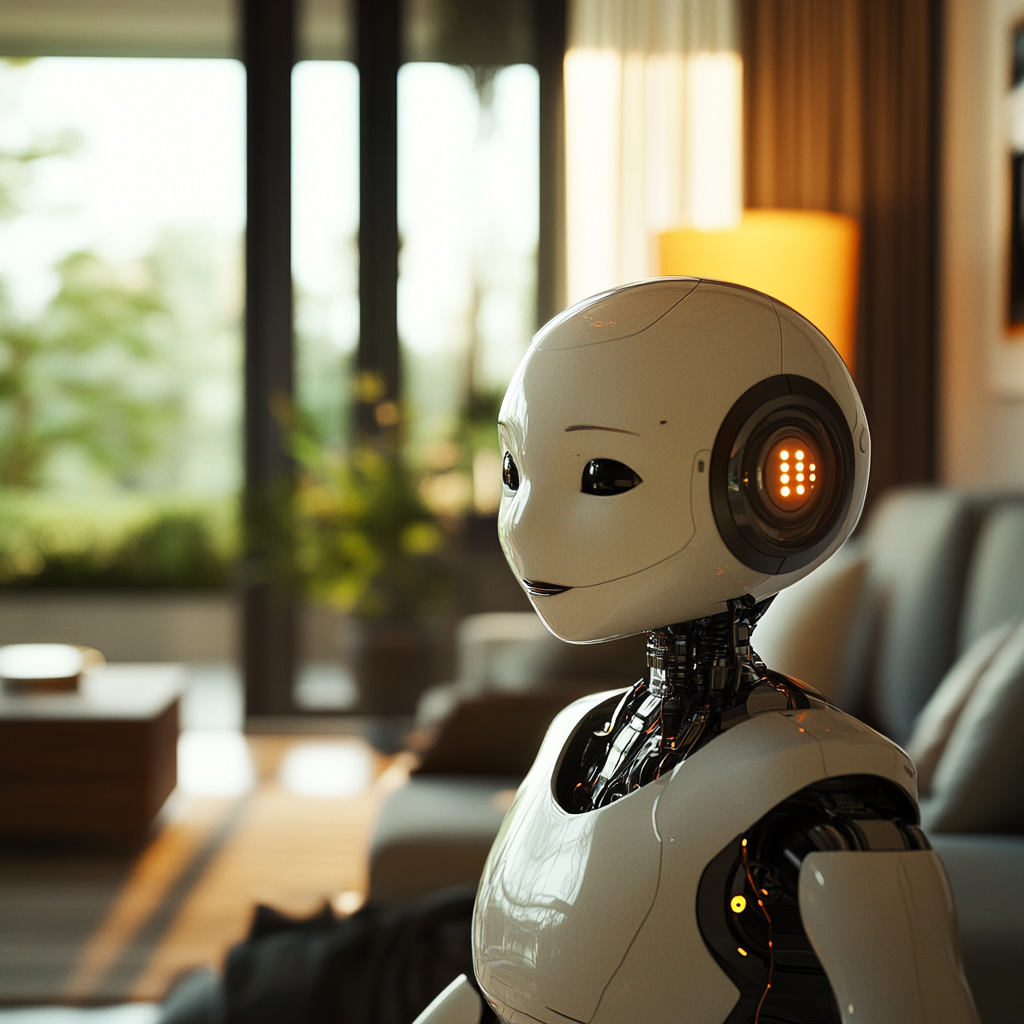
Bridging the Gap: Realistic Expressions in Androids
Crossing the Uncanny Valley: The Quest for Lifelike Facial Expressions in Androids
Imagine you're having a pleasant day when suddenly, you spot an android with a friendly smile. At first, everything seems hunky-dory. But as you step closer, that cheery grin feels off, kind of like a rancid apple in a basket of fresh fruit. Welcome to the uncanny valley, that curious phenomenon where robots teeter on the edge of being human-like, yet fall short enough to leave us feeling a bit creeped out. The term, coined by the brilliant Masahiro Mori back in the 1970s, suggests that as robots become more human-like—like our android friend there—their eeriness skyrockets if their imitation isn’t quite spot on. The closer they get to resembling us, the more discomfort they can stir in our hearts and minds. It’s a weird dance of technology versus emotion, and frankly, it doesn't always end well for our silicon siblings.
So why is it that facial expressions are so vital to this whole human-robot interaction? Well, think about it: every time you chat, your face does a myriad of dances. A raised eyebrow, a smirk, a frown, all these flecks of emotion tell a story far richer than words can convey. Yet replicating those facial expressions in androids hasn’t exactly been a slam dunk. Enter the infamous “patchwork method.” This does sound like a cozy solution, right? But hold your horses; prepare for some disappointments. This approach needed a painstaking amount of prep, with several pre-established scenarios to ensure the android didn’t look like it was auditioning for a horror film. Transitions between expressions became about as smooth as a gravel road during an earthquake. Discomfort all around.
And then the celestial tinkering began. Fresh out of Osaka University, researchers unleashed a new technology that turned the tables on the facial expression game. Hisashi Ishihara and Koichi Osuka stumbled upon something ingenious with their "waveform movements." Imagine breathing, blinking, yawning—those little gestures that are integral to human life—represented as individual waves. When these waves were overlaid, what emerged were facial movements that looked convincingly fluid and natural. Gone were the days of clunky transitions; this was emotional evolution in action! It’s as if they plucked music from our emotions and translated it into a symphony of facial behaviors.
Now, why stop there when you can unwrap human-like facial mechanics like they're the newest season of a binge-worthy series? Scientists dove deep into what makes our faces work. A recent study in the Mechanical Engineering Journal meticulously mapped out human facial mechanics, using 125 tracking markers plastered on a volunteer's face. The result? A dazzling array of 44 intricate facial actions that revealed the incredible dance of muscles, skin, and various other tissues that navigate the waterways of human expression. Michelangelo, eat your heart out!
Now that we’re fully equipped with waveforms and a detailed map of human facial dexterity, let’s talk about wave modulation. With this tech marvel, robots can adjust their expressiveness based on internal cues—like their mood swings after their morning upload of coffee. Seriously, they could mirror emotional changes with a flicker of their robotic features. This means more lively expressions that would leave even the stiffest human feeling guilty for not being as animated.
But hold on—it's not just Osaka University that’s pushing this field forward. Over at Hohai University in China, researchers are busy dreaming up sophisticated algorithms intended to create nuanced facial expressions. This two-step genius includes generating facial expressions guided by action units (that’s fancy talk for emotional cues) and then coordinating those expressions through realistic facial motors on humanoid robots. Think of it like teaching a robot to send a heartfelt emoji instead of a bland “thumbs up.” This isn’t just a technological endeavor; it’s like giving robots their own emotional language for effective interactions in schools, nursing homes, and heaven knows, almost anywhere that needs a sprinkle of warmth in communication.
So where are we headed? The holy grail is to bridge that oh-so-annoying uncanny valley gap. Researchers dream big: picture androids that can switch between emotions like humans, smiling genuinely while giving you heartfelt advice about your day. It’s a captivating thought! The ambition is to craft androids that not only look human but behave like us, making them not only acceptable but truly useful in our day-to-day lives. Take the FACE android, for instance. Too creepy! Despite how lifelike it appeared, its rigid expressions made it as relatable as a wet sock. New technologies are chipping away at these issues, ensuring smooth transitions and contextually relevant expressions, all in a bid to create a seamless connection between humans and robots.
But the implications stretch far beyond our wildest imaginings. Improved recognition capabilities and even medical diagnostics could usher in a new era. Picture a world where robots provide therapeutic companionship to the elderly or assist in educational scenarios, all while engaging in natural, emotionally-rich interactions. Who wouldn’t want a little android buddy with a friendly smile, ready to brighten up a dull day?
In wrapping up this tantalizing journey into the realm of lifelike expressions in androids, it’s clear that the future is burgeoned with possibilities. We stand on the cusp of a revolution, one where technology and humanity interplay like a finely-tuned symphony. As advancements continue to unveil, expect to witness a dazzling array of emotionally intelligent robots that look us in the eye and convey authentic human experiences.
Want to stay up to date with the latest news on neural networks and automation? Subscribe to our Telegram channel: @channel_neirotoken.
Remember, folks, the future of human-robot interaction is being intricately crafted today, and keeping your finger on the pulse is the first step to joining this enthralling adventure.

